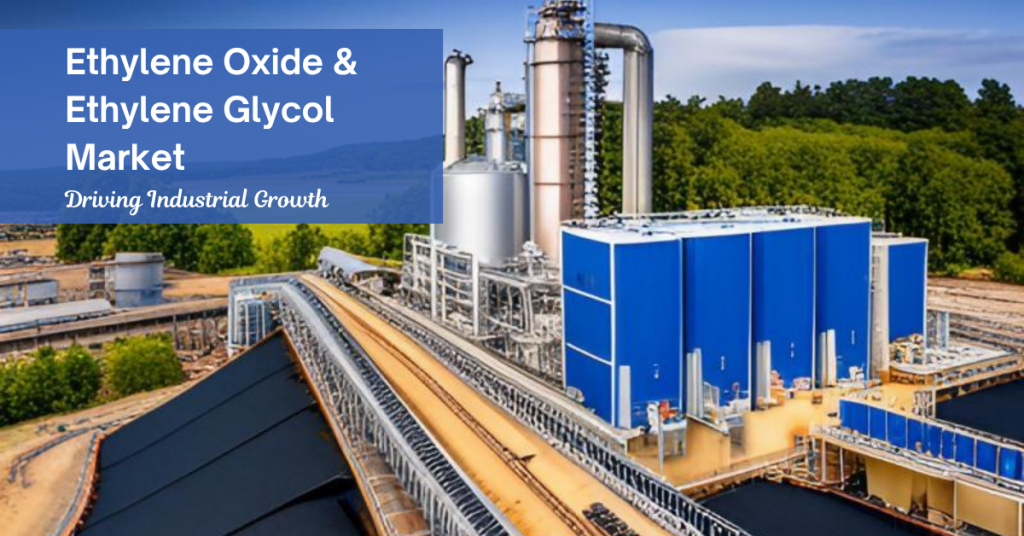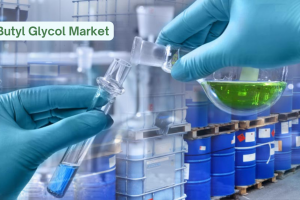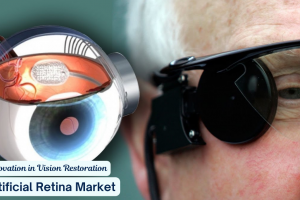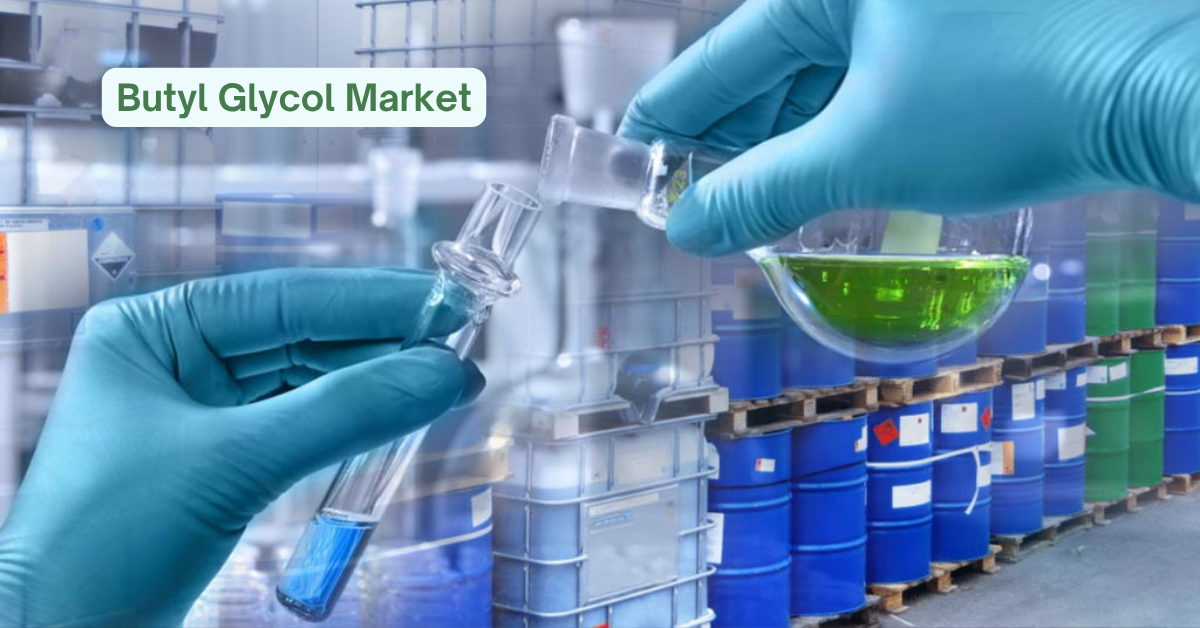
Market Overview
The Ethylene Oxide (EO) and Ethylene Glycol (EG) market is poised for significant transformation over the coming decade. Valued at USD 39,650 million in 2024, the market is projected to reach USD 62,720.7 million by 2032, expanding at a compound annual growth rate (CAGR) of 5.9%. This growth reflects the critical role these chemicals play in modern industrial ecosystems, particularly in the production of polyester fibers, PET resins, and sterilization products.
Ethylene oxide is a versatile and reactive compound used to manufacture detergents, antifreeze agents, solvents, and sterilization materials. Meanwhile, ethylene glycol, particularly its mono form (MEG), is central to polyester manufacturing and is also widely applied in automotive coolants and industrial fluids.
Industries ranging from packaging and automotive to healthcare and electronics rely on EO and EG for high-performance solutions. The increasing demand for polyester-based fabrics and bottles, rising automotive production, and the expanding need for sterilized medical equipment have fueled demand for these chemicals. In addition, growing consumer demand for sustainable and bio-based alternatives is prompting innovation in green chemical manufacturing.
With Asia-Pacific leading the demand curve and North America and Europe focusing on sustainable practices, global manufacturers are actively investing in R&D, capacity expansion, and partnerships to stay competitive. Regulatory support for clean technologies and the ongoing evolution in consumer packaging habits will further drive the market forward.
Read full report: https://www.credenceresearch.com/report/ethylene-oxide-and-ethylene-glycol-market
Market Drivers
Polyester Boom in Fast Fashion and Packaging
A primary driver of EG demand is the explosive growth of the polyester industry. Polyester fibers account for more than half of global fiber consumption, and monoethylene glycol is the essential raw material for their production. The rise of fast fashion and increasing reliance on PET bottles in beverage and food packaging are rapidly boosting EG consumption. Developing economies such as Vietnam, Bangladesh, and India are emerging as key hubs in this space.
Increased Focus on Infection Prevention in Healthcare
Ethylene oxide is widely used for the sterilization of medical equipment, including surgical instruments, syringes, and plastic devices that cannot withstand heat-based sterilization. With rising concerns around hospital-acquired infections (HAIs) and global health emergencies such as pandemics, EO-based sterilization remains the gold standard. Governments and private hospitals are ramping up investments in medical sterilization infrastructure.
Antifreeze Applications in Expanding Vehicle Fleets
Global vehicle ownership is on the rise, especially in Asia and Latin America. Ethylene glycol is a key ingredient in antifreeze and coolant products used in internal combustion engines and hybrid vehicles. Its role in maintaining engine temperatures across a wide range of climates supports consistent demand in the automotive sector.
Broad Use in Industrial and Household Cleaning Products
The demand for non-ionic surfactants—many of which are derived from EO—is steadily increasing. These surfactants are used in a range of applications, from household detergents to industrial cleaners and cosmetics. As hygiene awareness grows globally, EO-based products are seeing sustained consumption across all regions.
Market Challenges
Toxicity and Stringent Regulations
Despite their utility, both EO and EG pose health and safety challenges. Ethylene oxide, in particular, is classified as a carcinogen by several regulatory agencies. Prolonged exposure can lead to respiratory and neurological damage. This has resulted in strict regulations around EO handling and storage, especially in Europe and North America, increasing compliance costs for producers.
Fluctuating Feedstock Prices and Supply Chain Disruptions
The EO/EG production process depends heavily on ethylene, which in turn is derived from petrochemical sources. Market volatility in crude oil and natural gas prices directly impacts raw material costs. Geopolitical tensions, logistics disruptions, and refinery outages can exacerbate pricing pressure and availability issues.
Growing Shift to Eco-Friendly Alternatives
Environmental and social governance (ESG) policies are pushing industries toward bio-based and less toxic alternatives. Substitutes such as bio-PET and green ethylene oxide are under active research and development. This could potentially disrupt demand for conventional EO/EG products over the long term, particularly in packaging and textile segments.
Carbon Emission Regulations Impacting Expansion
The energy-intensive nature of EO and EG production means that many countries are putting limits on carbon emissions from such facilities. As governments tighten carbon policies, manufacturers may need to invest heavily in cleaner technologies or carbon offsetting, which can delay ROI.
Market Opportunity
Sustainable Chemistry and Bio-Based Production
An increasing number of chemical manufacturers are exploring bio-based feedstocks for EO and EG production. Technologies using biomass-derived ethanol or glycerol are gaining traction. Companies that invest in such sustainable processes are likely to attract eco-conscious customers and secure long-term regulatory compliance.
Emerging Markets with Low Saturation
Asia-Pacific continues to dominate global demand, but newer growth frontiers are emerging in sub-Saharan Africa and Southeast Asia. These regions have untapped potential in textiles, automotive, and construction sectors. Establishing EO/EG production facilities in these markets could offer cost and logistical advantages.
Diversification into Specialty Applications
EO and EG have growing uses in high-value specialty chemical segments such as personal care products, inks, adhesives, and performance lubricants. As consumers seek multifunctional and durable materials, opportunities will arise to develop niche product lines catering to these applications.
Smart Manufacturing and Automation
Advanced manufacturing practices such as digital twins, AI-driven process controls, and predictive maintenance can enhance EO/EG plant productivity and reduce downtime. Automation not only improves yield but also ensures regulatory compliance through continuous monitoring of emissions and safety protocols.
Market Segmentation
By Type
- Ethylene Oxide
- Monoethylene Glycol (MEG)
- Diethylene Glycol (DEG)
- Triethylene Glycol (TEG)
- Derivatives and Co-products
By Application
- Polyester Fiber and Yarn
- PET Bottle and Film
- Antifreeze & Engine Coolants
- Industrial Cleaning and Detergents
- Solvents and Resins
- Personal Care and Cosmetics
- Medical Sterilization
- Adhesives & Sealants
- Construction Chemicals
- Agrochemicals
By End-Use Industry
- Automotive & Transportation
- Textiles & Apparel
- Food & Beverage Packaging
- Healthcare & Pharmaceuticals
- Household and Industrial Cleaning
- Construction & Infrastructure
- Electronics
- Aerospace
- Agriculture
- Chemicals & Petrochemicals
By Region
- North America (U.S., Canada, Mexico)
- Europe (Germany, France, UK, Spain, Italy, Russia, Netherlands, Poland, Sweden, Rest of Europe)
- Asia Pacific (China, India, Japan, South Korea, Indonesia, Vietnam, Thailand, Malaysia, Rest of Asia Pacific)
- Latin America (Brazil, Argentina, Chile, Colombia, Rest of Latin America)
- Middle East & Africa (UAE, Saudi Arabia, South Africa, Nigeria, Egypt, Rest of MEA)
Regional Analysis
North America
The region is characterized by mature demand and high regulatory scrutiny. The U.S. remains a key player in healthcare EO applications and automotive antifreeze production. Growth is largely fueled by innovation in green chemistry and expansion in specialty surfactants.
Europe
European countries are adopting stricter regulations regarding EO emissions, pushing the industry toward cleaner and safer alternatives. However, the region continues to invest in bio-based EO/EG technologies, supported by EU Green Deal initiatives. Countries like Germany and Belgium are hubs for EO-based cleaning agents and cosmetic formulations.
Asia Pacific
Asia Pacific is the world’s largest and fastest-growing EO and EG market. China alone accounts for a significant share of global polyester production, supported by an integrated petrochemical supply chain. India and Southeast Asian countries are also seeing growth in the automotive and packaging sectors, driving demand for both EO and EG products.
Latin America
Industrial growth in Brazil and Argentina is supporting the demand for EG in textiles and construction. While local production remains limited, imports are meeting demand for EO-based cleaning agents and antifreeze.
Middle East & Africa
The Middle East is capitalizing on its petrochemical strengths, with investments in EO and EG capacity expansion. African nations are also witnessing rising demand for sterilants, deicing fluids, and industrial surfactants, aided by improving healthcare and infrastructure systems.
Top Companies
- Eastman Chemical Company
- BASF SE
- Shell Chemicals
- Indorama Ventures
- Formosa Plastics Group
- Lotte Chemical Corporation
- Huntsman Corporation
- Reliance Industries Limited
- SABIC
- ExxonMobil Chemical
Future Outlook
- Polyester and PET consumption will continue to dominate EG demand, driven by packaging and apparel needs.
- Healthcare applications of EO will rise, especially in regions investing in sterilization infrastructure.
- The market will witness a gradual transition to bio-based EO/EG as ESG pressures mount.
- Advanced manufacturing will help producers reduce costs and emissions, improving competitiveness.
- China will remain central to global polyester supply, though diversification will increase in Southeast Asia.
- Automotive electrification may shift EG use toward thermal management fluids for EVs.
- Specialty chemicals will become a lucrative segment for EO and EG derivatives.
- Joint ventures and mergers will grow to increase scale and technology sharing.
- Regions like Africa and Central Asia offer long-term potential for EO/EG investments.
- Regulatory harmonization in emerging markets may simplify expansion for global players.
Read full report: https://www.credenceresearch.com/report/ethylene-oxide-and-ethylene-glycol-market










